I’ve received an email from European SaaS All-in-One SMB provider 24SevenOffice (wow, that’s a mouthful, basically NetSuite+Office for really small businesses, see my earlier coverage):
2008 must be the year when we all act against the serious environmental threat that the world is facing. 24SevenOffice has developed “The Go Green Game”, a Flash-game that puts focus on the pollution caused by the millions of unnecessary server rooms and servers located in all companies.
In addition, 24SevenOffice will plant trees based on the number of players, in co-operation with Nobel Peace Prize winner Maathai’s Green Belt Movement. If you wish to make a direct contribution to the society, let yourself entertain at http://game.24SevenOffice.com/ or forward this e-mail to friends, colleagues and business partners who are committed to the environmental battle.
Thank you for showing responsibility for the environment! The game can be found here: http://game.24SevenOffice.com/
 I had mixed thoughts at first reading: Obviously environmental consciousness is becoming fashionable. Companies rush to launch their green initiatives in order to look “responsible corporate citizens”. OK, that’s the cynical view, but after all, these are often useful initiatives, and I’ve already said you don’t have to be purely altruistic to do good.
I had mixed thoughts at first reading: Obviously environmental consciousness is becoming fashionable. Companies rush to launch their green initiatives in order to look “responsible corporate citizens”. OK, that’s the cynical view, but after all, these are often useful initiatives, and I’ve already said you don’t have to be purely altruistic to do good.
Whatever this game may be, it’s just a “save the earth” message, it’s not a vehicle to push 24SevenOffice products…
But wait! Like Columbo, when you think he’s gone, but comes back and drops the gist of the conversation, there’s a footnote here:
NB! The products mentioned in this e-mail are not the environmental sinners in themselves.
The environmental problem is based on the fact that most businesses, unnecessarily, have their own
servers and server rooms. This is the issue that 24SevenOffice is addressing.
Ahh…so it is advertising after all. Oh, well, it still delivers a correct message .. let’s check out the game itself:
I need to practice my swing, I could barely smash a few servers, look how much they’ve already racked up! Even worse, I’m not good in reading instructions, totally missed option#2, which is…no, I can’t tell you, it’s too violent.
Joke apart, 24SevenOffice clearly has a point: maintaining millions of servers for (small) businesses is wasteful, switching to Cloud Computing allows central servers to be more efficiently utilized, we’re all saving energy.
As a side-note, I’ve just looked at a web-based service that allows us, as individual consumers “go green” – will report about it when they are ready.

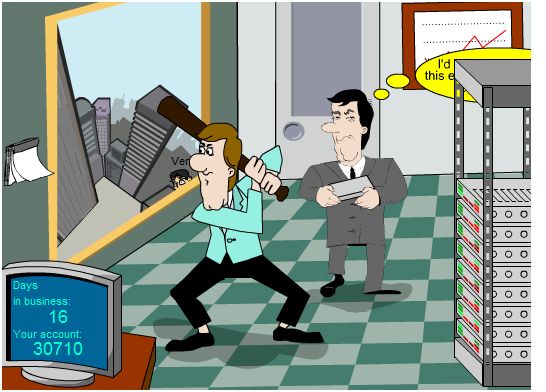



 The belts will be tightened, says the
The belts will be tightened, says the  Yes, Dan is right, “Web/Enterprise 2.0 startups can’t get a hearing with CIOs and tech buyers at corporations” and their apps are not considered mission critical, but the whole point is that a lot of these Enterprise 2.0 tools are not sold at the CIO level.
Yes, Dan is right, “Web/Enterprise 2.0 startups can’t get a hearing with CIOs and tech buyers at corporations” and their apps are not considered mission critical, but the whole point is that a lot of these Enterprise 2.0 tools are not sold at the CIO level. 

 I am an advisor to Zoho. Don’t just take my word – go and
I am an advisor to Zoho. Don’t just take my word – go and 






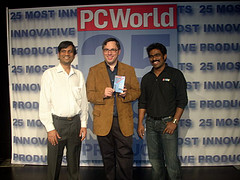




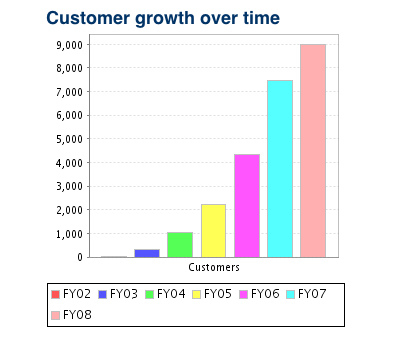 The
The  ) – but that’s typically in the context of Software as a Service, and in the SMB (small business) market. Atlassian’s products are mostly on-premise (although they now have a hosted version of Confluence) and their primary market is the large Enterprise. Yet they pulled off what amounts to a small miracle: essentially took the download.com, tucows style model we all know as consumers, and ported it to the enterprise space.
) – but that’s typically in the context of Software as a Service, and in the SMB (small business) market. Atlassian’s products are mostly on-premise (although they now have a hosted version of Confluence) and their primary market is the large Enterprise. Yet they pulled off what amounts to a small miracle: essentially took the download.com, tucows style model we all know as consumers, and ported it to the enterprise space. 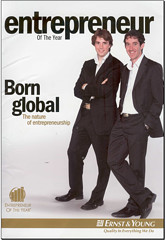
 So what is this culture like? Tough. When he doesn’t make his numbers, Atlassian President Jeffrey Walker is forced to make up for it as ticket-scalper on the street.
So what is this culture like? Tough. When he doesn’t make his numbers, Atlassian President Jeffrey Walker is forced to make up for it as ticket-scalper on the street.  ) I wonder when the San Francisco office will move into a winery… Perhaps
) I wonder when the San Francisco office will move into a winery… Perhaps  you get the picture by now: Working for Atlassian isn’t just a job – it’s a
you get the picture by now: Working for Atlassian isn’t just a job – it’s a 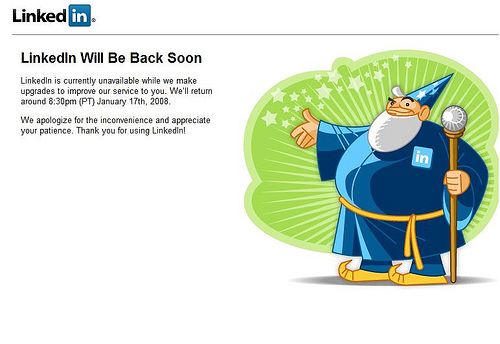

Recent Comments